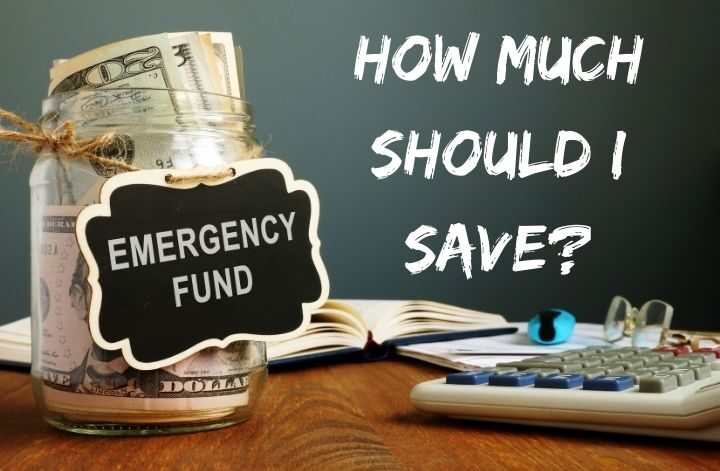If this pandemic has taught us anything it is that we need to have an emergency fund. Some people learned this the hard way which resulted in unpaid bills, eviction, and getting deeper into debt. However, we need to stop focusing on the negativity of what has happened. What matters most now is that we have had a wake up call and now it is time to look forward towards our financial future.
We now know having an emergency fund is necessary. So then how much do we need to be saving for it? A three to six month emergency fund is a very typical recommendation. That is normally all you will need to get back on your feet after an emergency.
Deciding how many months to plan for is up to you and your comfort level. I personally feel more comfortable with a larger emergency fund. It has taken me longer than three months to get hired at a new position in the past. Due to that I would feel a lot better knowing I have six months worth of expenses covered rather than only three months worth.
Once you have set your goal then you can start calculating the exact dollar amount you will need to save. This can be calculated based on income, essential living expenses, and/or comfort level. Having a budget will be essential for figuring out these numbers. As well as keeping you on track to save the full emergency fund.
If you want to calculate it based off your income, use your average take home pay multiplied by the number of months you picked in the previous step. This will tell you the total dollar amount needed for your emergency fund. This method is the most recommended and often the easiest way to calculate how much money to put in your emergency fund. For instance, lets say I take home close to $5,000 per month and I want a six month emergency fund. Then my calculation would be:
$5,000 Per Month x 6 Months = $30,000 Income Based Emergency Fund
Remember to always round up your income for safety reasons. It is better to have a little more in these calculations than it is to not have enough. The same advice should be used for the next two methods of calculating your emergency fund.
If you would rather create an emergency fund based off your essential expenses then it will require a little more math. For this one you need to go back to your previous months of budgeting or through your expenses. You will need to record how much was spent on average for all the needed items and services.
This would include things like rent, mortgage, utilities, minimum debt payments, grocery bills, medical bills, etc. This would not include extra money you put towards debt, investments, savings, fun money, or luxury subscriptions. Which means if you need to use your emergency fund you would need to cut out all unnecessary spending. This is done to make sure your emergency fund lasts long enough for you to get out of the crisis. For example, if all my necessary bills add up to around $3,000 then my calculation would look like this:
$3,000 Essential Monthly Expenses x 6 Months = $18,000 Essential Expenses Based Emergency Fund
If you want to calculate it based off your comfort level you need to take into consideration all of your essential spending and unnecessary fun money spending. This is similar to the calculation based off of your income. However, it also involves adding some extra money to meet your weekly or monthly spending expectations.
This kind of emergency fund will help you when you experience a job loss or something tragic like the loss of a family member. Emotions can play a huge part in those kinds of emergencies. When emotions get involved we often start spending on unnecessary things as a way to comfort ourselves.
This comfort emergency fund will help you live an average lifestyle with some fun money spending. I recommend slowing down unnecessary spending when possible as an emergency fund should only be used for emergencies. However, if you budget the extra amount then you will not have to make tough decisions on whether or not you can buy something to remember your loved one.
The easiest way to calculate the comfort based emergency fund is to take the calculation from the income based emergency fund. Then add some more money on top of it. How much you add is dependent on how much extra money you think you will spend on unnecessary things. Going back to the first calculations we determined that $5,000 a month x 6 months = $30,000 income based emergency fund. A comfort based calculation would look something like this:
$30,000 Income Based Emergency Fund + $5,000 Extra For Comfort Spending = $35,000 Comfort Based Emergency Fund
While I don’t recommend spending extra money while your out of a job or going through a crisis. I also understand it is hard to resist comfort spending when in the middle of hard crisis. Which is why it is wise to add a little more for safety reasons. Just don’t go crazy with overspending because once the crisis is over, you have to work to build back up that emergency fund. The more you spend, the longer it will take for you to build it back up.
Ultimately how much you put in your emergency fund is up to you. It is based off of your personal finances and your comfort level. Just remember that the more you have in your emergency fund, the more safety you have. If you choose a smaller amount, it will be faster to save your fully funded emergency fund. Make a plan that is right for you and stick to it.




